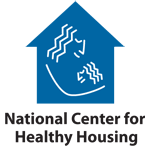|
|
Sort results by: Best Match | Date Added | Alphabetically
We do not strictly control Google ad content. If you believe any Google ad is inappropriate, please email us directly here.
- The National Green Building Standard (ICC 700-2008) for all residential construction work including single-family homes, apartments and condos, land development and remodeling and renovation has been approved by the American National Standards Institute.
- The Green Label program is replaced by the stronger and more comprehensive Green Label Plus standard.
- Find out how to tell whether a product or action is "green" or not.
- The National Association of Home Builders recently launched the NAHB National Green Building Program, an education, verification and certification program that will allow builders anywhere to build green homes.
- Going green may be easier than you think.
- Boise organizations partner to let Boise home buyers have it all.
- Making your home a greener place is a commitment – to yourself, your family, your community and the world. But more than that, it is a learning process.
- A survey of local home building associations and recent updates reveal that more than 100,000 homes have been built and certified by voluntary, builder-supported green building programs around the country since the mid-1990s, according to the National Association of Home Builders.
- The Carpet and Rug Institute (CRI) is the first organization within the soft floor covering sector to earn accreditation as a certification body for indoor air quality by the American National Standard Institute (ANSI), the premier source for international standardization and conformity assessment.
- "Green building has its own inherent architecture, reflecting the Earth itself. It is a synthesis of natural elements and good design."
- Mark L. Hixson, Earthcraft Construction Inc.
- Natural ventilation is becoming an increasingly attractive method for reducing energy costs while improving indoor air quality, according to green building advocates.
- The U.S. Green Building Council (USGBC) provides answers to Frequently Asked Questions (FAQs) about LEED for Homes.
- Whether you’re a homebuyer or a renter looking for a green home, how do you know if a home is truly green?
- LEED homes offer many benefits to home owners, including lower energy and water bills; reduced greenhouse gas emissions; increased comfort, less exposure to indoor pollutants such as mold, mildew and other indoor toxins, and lower maintenance costs.
- In a recently completed study funded by GREENGUARD Environmental Institute (GEI), there was preliminary evidence that "green" low-emitting products may still cause IAQ problems.
- What you need to know about LEED for Homes.
- GS-44 is the first standard to comprehensively address the health, environmental, and labeling concerns for soaps, cleansers, shampoo, and conditioners for adults, children and infants.
- The net cost of owning a green home can be comparable to that of owning a conventional home – sometimes even less.
- Builders tend to focus more on energy and environmental conservation in their selection of green features; and may inadvertently contribute to poor indoor air quality (IAQ).
- A renovation project is the perfect time to turn your home into a greener building.
We do not strictly control Google ad content. If you believe any Google ad is inappropriate, please email us directly here.



Information provided by The Healthy House Institute is designed to support,
not to replace the relationship between patient/physician or other qualified
healthcare provider.
Education Partners
Ads, ad links, products and content on this page are not necessarily endorsed by these organizations.
|

We do not strictly control Google ad content. If you believe any Google ad is inappropriate, please email us directly here.
|








